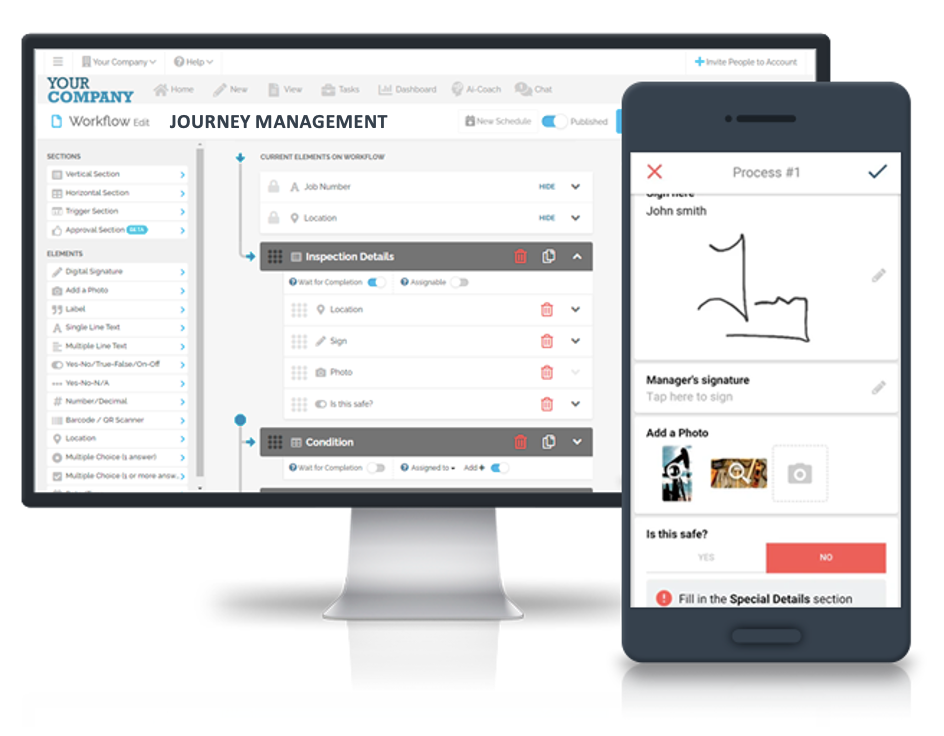As the world continues to rely heavily on energy production and distribution, the need for effective risk assessment methodologies in this sector becomes increasingly crucial. This article explores the various risk assessment methodologies used in energy production and distribution, and how digital workflow procedure builders like FAT FINGER can help streamline these processes.
With FAT FINGER, you can build digital workflow procedures that improve safety in your facility, making safety and preventive measures everyone’s responsibility. Request a demo today to see how FAT FINGER can revolutionize your risk assessment processes.
Understanding Risk Assessment in Energy Production and Distribution
Risk assessment in energy production and distribution involves identifying potential hazards, evaluating their potential impacts, and implementing measures to mitigate these risks. This process is crucial in ensuring the safety of workers, the environment, and the general public, as well as the reliability and efficiency of energy systems.
Common Risk Assessment Methodologies
Several risk assessment methodologies are commonly used in the energy sector. These include:
- Quantitative Risk Assessment (QRA): This involves using numerical values to estimate the probability and impact of risks.
- Qualitative Risk Assessment: This involves using descriptive categories to evaluate risks.
- Failure Modes and Effects Analysis (FMEA): This involves identifying potential failure modes, their causes, and their effects.
- Hazard and Operability Study (HAZOP): This involves identifying and evaluating potential hazards and operability problems.
Case Study: Risk Assessment in the Oil and Gas Industry

The oil and gas industry is a prime example of a sector that heavily relies on risk assessment methodologies. For instance, a HAZOP study may be conducted to identify potential hazards in an oil refinery. The identified risks could range from equipment failure to human error, and the impacts could include worker injuries, environmental damage, and production losses. Mitigation measures could then be implemented, such as regular equipment maintenance, worker training, and emergency response planning.
How FAT FINGER Can Help

FAT FINGER empowers front-line teams to do their work correctly every time by letting you build checklists, workflows, and digital procedures that unlock operational excellence. With FAT FINGER, you can build these six safety checklists:
- Take 5 Safety
- Near Miss Reporting
- Job Hazard Analysis
- Risk Assessment
- Incident Reporting in the Workplace
- Journey Report
These checklists can help you stay ahead of potential issues, anticipate hazards, safeguard against threats, and ensure a safe and secure workplace. With FAT FINGER’s innovative tool, it’s simple to customize existing plans or make new ones from scratch and share them across all of your sites with one export.
Conclusion
Risk assessment methodologies are crucial in energy production and distribution, helping to ensure safety, reliability, and efficiency. Digital workflow procedure builders like FAT FINGER can streamline these processes, making safety and preventive measures everyone’s responsibility. With FAT FINGER, you can build powerful safety checklists that help you stay ahead of potential issues, anticipate hazards, safeguard against threats, and ensure a safe and secure workplace.
Ready to revolutionize your risk assessment processes? Build a safety checklist with FAT FINGER today.
Discover more about risk assessment methodologies for energy production and distribution. Enhance your knowledge and ensure safety in your operations. Click here to learn more.


